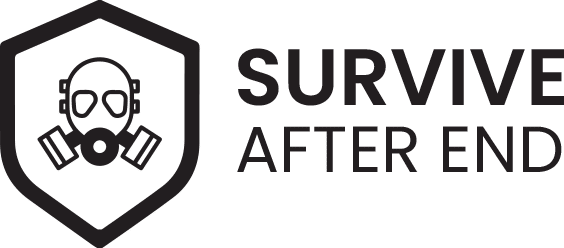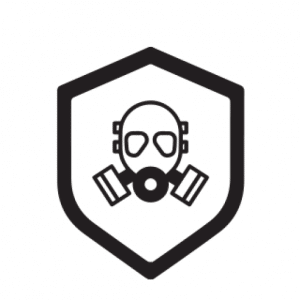In the world of outdoor survival, a good fire can mean the difference between life and death.
A fire in the wilderness can be a lifesaver, especially when you’re stranded in a remote area without any food or shelter.
Starting a fire is a skill that every outdoorsman should master.
And the best way to learn this essential skill is to practice it in a controlled environment.
Get familiar with fire starter tools like matches and lighters are commonly found in a regular household.
Then play around with other fire starter kits made for survival in the wood like flint and steel.
Preparing for Wilderness Fire Making
The technique of making a fire is pretty straightforward; there 4 main elements you need to prepare: the ignition source, tinder, kindling, and fuel.
Ignition Source
The first thing you need to have is an ignition source.
It can be anything from a match, flint & steel, a spark from a metal object, or even friction from a sharp stone or a piece of wood.
Tinder
Next up, you need tinder.
Tinder is just a small material that is ready to catch fire.
Natural tinder includes twigs, dry leaves, and dry grass.
But natural tinder is unreliable, and it could easily be dry out or wet and would not burn.
So, you can use something else artificial like a cotton ball filled with vaseline, dryer lint, or jute.
Kindling
Kindling usually has a larger diameter than tinder, and you’ll need to cut it into smaller pieces.
You need kindling for a fire to last longer and provide more heat.
Fuel
Finally, you need fuel to extend your fire; fuel can be a big wood, log, or anything you can find that will burn.
It should be dry and not too big to light it easily.
Fire-Building Techniques
Now let’s talk about different fire-building techniques that you can use to get a fire started.
Teepee Method
It shapes form like the teepee tent.
You build a small teepee with the tinder and kindling in the middle and surround it with fuel( large piece of wood).
The advantage of this building technique is that it can burn very hot, but it can burn down very quickly, which is a downside.
Log Cabin Method
Start by building a small teepee style in the middle, then take the two biggest pieces of wood and place them on either side of the teepee, parallel to each other, continue stacking logs on top of the cabin sets.
fFinally built a closed roof on top of it.
The log cabin style lasts longer to burn down; it is also great for cooking.
The downside is it can be less hot than the teepee-style building techniques.
Upside Down Fire Method
Typical fire building techniques are burning bottom-up process, fire on the bottom, then burn the way up.
However, if you want to make a fire that lasts longer, you need to burn the way down.
Upside down fire building technique is burning top-down process, fire on top, then burn the way down.
The reason to use this technique is the fire can last longer and is low maintenance.
The upside-down fire style’s disadvantage is that it’s harder to get started and takes time to set up.
Lean-to Method
The lean-to method is the best type of structure for starting a fire on a windy day.
The reason for this is that the large piece of wood used as a base can act as a windshield while you’re getting your initial flames going.
It is great in windy weather, but it is very difficult to cook with this shape, and it is less hot compared to other techniques.
Things you need to know before start a fire in the forest
Be responsible
Always take proper precautions when starting a fire.
Build your fire in designated fire rings or fire pits, make sure to clear the area, no dry leave, dry brush around, only inflammable element in the fire pit.
The last thing we don’t want is to cause a forest fire.
Make sure you have enough water nearby so that when the fire starts to spread somewhere not supposed to be, you got the time to pull it off.
Do Not Leave Your Fire Unattended
Paying attention to what your fire is doing and making sure it is well managed, it will probably burn out of control if you are not there to watch over it.
Properly Extinguish Your Fire when Done
When done, make sure to put out your fire completely.
Inspect your fire before you leave.
Start Fire with Fire Starter Tool
Here’s the video by StoneAgeMan teach you the basics on how to make a fire in the wild and demonstrate a few fire-building techniques.
Start Fire without matches, lighter or any Fire Starter Tool
Maybe you lost in the wild and didn’t have the tools to start a fire; then you need to go with a primitive way.
Dr. Bill Schindler, a professor of archeology and anthropology at Washington College, will show you how to start a fire in the wilderness using limited resources.
Extinguish Your Fire
Never leave your campfire without completely extinguishing it.
The embers of a fire can reignite, creating an even bigger fire.
Remember, When putting out your fire:
1. Drown the fire with water.
2. Mix the ashes and embers with soil. Scrape all partially-burned sticks and logs to ensure all the hot embers are off them.
3. Stir it around, make sure the embers are wet and covered with water.
4. Use the back of your hand to feel the embers; everything should be cool to the touch; if not, then pour more water.
5. Take an extra minute to investigate the place again.
Source: USDA
———-
All in all, We need to be responsible when making a fire in the wild.
Make sure to put out your fire completely and make sure you are not leaving your fire unattended when done.


